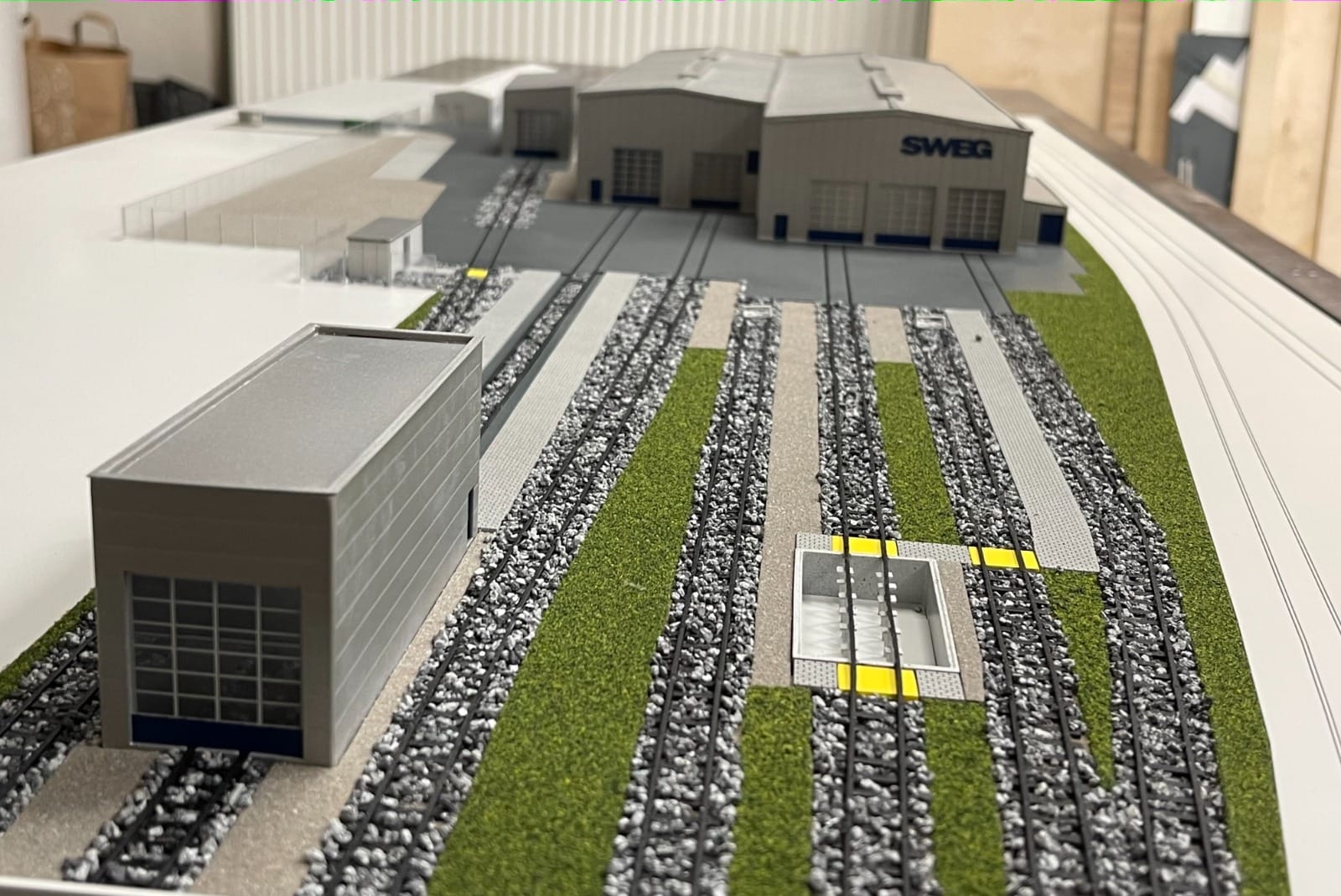Architectural model makers play a vital role in the design and planning process of built environments. In a city as architecturally rich and diverse as Berlin, the demand for precise and artistic models is profound. The work of an architectural model maker Berlin transcends simple craftsmanship; it blends art and science to create physical embodiments of abstract ideas. Their work facilitates a profound understanding of design through tangible representations, crucial for stakeholders including architects, developers, and clients.
Importance of Architectural Models in Design
Architectural models serve multiple purposes in the design process. They allow architects and designers to visualize their concepts in three dimensions, creating a clearer understanding of spatial relationships and design scale. Models can convey materials, textures, and the overall aesthetic appeal of a project, which sketches or digital renderings alone may not achieve. Moreover, they can be employed at different project stages, whether to explore ideas during preliminary design or to present to clients and planning authorities.
For urban planning projects, models can illustrate how new developments will integrate within the surrounding environment. They enable stakeholders to assess the proposed impacts on neighborhoods, contributing to more informed decision-making. Such an approach helps mitigate potential conflicts and enhances community engagement by allowing residents to visualize the implications of architectural developments in their locale.
How Architectural Model Makers Enhance Client Communication
Effective communication is essential in architecture, as ideas must be conveyed clearly to a range of individuals, each with varying levels of understanding of design principles. Architectural model makers play a critical role in this aspect by providing a physical artifact that everyone can engage with. These models serve as a common language that transcends technical jargon, allowing clients who may not be familiar with architectural details to comprehend design intentions easily.
By employing models during presentations, architects facilitate more robust discussions with clients and stakeholders, easing the process of obtaining feedback and making necessary adjustments. The model serves as a focal point for these conversations, enhancing collaboration and ensuring that the final product aligns with the client’s vision.
Common Materials Used in Architectural Model Making
The materials used in architectural model making are diverse, often selected based on the model’s purpose, desired level of detail, and budget constraints. Common materials include:
- Cardboard and Paper: Frequently used for prototype models due to their affordability and ease of manipulation.
- Foam Board: Offers a lightweight yet sturdy option, perfect for creating intricate structures and detailed surfaces.
- Balsa Wood: A popular choice for its ease of cutting and shaping, ideal for fine-detail work.
- Acrylic and Plexiglas: Used to represent glass components, allowing for transparent modeling of facades and windows.
- 3D Printed Materials: Increasingly utilized for their precision and ability to create complex geometries that traditional materials cannot achieve.
Key Features of a Leading Architectural Model Maker Berlin
Technical Expertise and Craftsmanship
Top architectural model makers in Berlin possess a refined set of technical skills and craftsmanship honed through years of practice and professional training. Their knowledge extends beyond basic model-making techniques to include advanced skills in scaling, proportions, and material selection. Mastery of the latest modeling tools and technologies, including laser cutting and 3D printing, is essential for creating high-quality models that meet contemporary architectural standards.
Furthermore, an exceptional model maker appreciates the artistic nuances of design, infusing creativity into their work. This balance of technical proficiency and artistic insight is what distinguishes a leading model maker from their peers, greatly enhancing the quality and effectiveness of the models produced.
Innovative Approaches to Sustainable Model Making
As environmental awareness grows within the architecture and design industries, many model makers are adopting sustainable practices. These approaches not only minimize waste but also consider the environmental impact of materials and production methods. Leading architectural model makers are now using recycled materials, biodegradable options, and non-toxic adhesives.
Moreover, sustainable practices encompass the entire model-making process, from design to disposal. By designing models that are reusable or recyclable, model makers contribute positively to the architectural community’s shift towards sustainability. Berlin’s robust green initiatives and focus on sustainable development make it a fertile ground for such innovative practices to flourish.
Portfolio Diversity and Client Success Stories
A compelling portfolio displaying a range of completed projects is essential for any architectural model maker. This diversity demonstrates versatility and experience across different types of buildings and scales, from residential homes to large urban developments. Highlighting various client success stories adds credibility and serves as a testament to the model maker’s ability to tackle different challenges effectively.
Successful collaborations with renowned architects or participation in significant projects provide valuable exposure. They also illustrate the model maker’s role within a collaborative ecosystem, showcasing teamwork and the importance of integrating models into the larger design narrative. Sharing case studies with detailed insights into specific projects can elevate a model maker’s stature within the industry.
Choosing the Right Architectural Model Maker in Berlin
Factors to Consider When Selecting a Model Maker
When choosing an architectural model maker in Berlin, several factors come into play to ensure the selected partner aligns with project objectives. First, reviewing their portfolio can provide insight into their style and capabilities. It’s also essential to evaluate their experience with similar projects, as familiarity with your project’s scale or type can be a significant advantage.
Additionally, consider their technical resources—do they have access to advanced tools like 3D printers or laser cutters? These resources can greatly affect the model’s quality and detail. Moreover, the turnaround time and cost structures are equally important. Ensure that the model maker can meet your deadlines without compromising quality, and that their rates align with your budget expectations.
Questions to Ask Potential Model Making Partners
To select the right architectural model maker, engage in a thorough conversation to gauge their compatibility with your goals. Some key questions include:
- What is your experience with projects similar to ours, and can you provide relevant examples?
- Can you describe your model-making process from start to finish?
- How do you ensure quality throughout the construction of a model?
- What materials do you typically work with, and how do you select them?
- Can you accommodate last-minute changes or adjustments to the model?
Understanding Pricing and Value
Pricing for architectural models varies widely and can be influenced by several factors, including the complexity of the design, the materials used, and the time required for production. On average, basic models may start around €500, while intricate, large-scale models could exceed €10,000.
When evaluating costs, it’s vital to consider the value produced rather than just the price tag. Quality models can convey concepts effectively, leading to better communication with clients and stakeholders and ultimately enhancing project outcomes. Investing in a skilled architectural model maker can yield significant returns in the successful pitching of projects.
Best Practices for Collaborating with Your Architectural Model Maker
Effective Communication Throughout the Process
Communication is key in ensuring that the final model aligns with the original vision. Establishing clear channels of communication and regular check-ins can help address questions or concerns as they arise. Utilizing visual aids, such as sketches or reference materials, can enhance clarity and alignment on expectations.
Moreover, nurturing a collaborative atmosphere invites open dialogue, allowing for timely feedback and iterative improvements. This proactive approach ensures that the model evolves in tandem with the design process, leading to a more effective final product.
Setting Clear Expectations for Deliverables
Before commencing the project, articulate clear expectations regarding deliverables, timelines, and any design parameters. Documenting these aspects can prevent misunderstandings and set a framework for accountability. Regularly revisit these expectations to assess progress, allowing for any necessary adjustments as the project develops.
Providing detailed project briefs can also help your model maker better understand your needs and align their efforts with your objectives. Consider including specifics about intended usage, target audience, and any technical requirements that may influence the model’s design.
Evaluating the Final Product for Success
Once your architectural model is complete, evaluating it against predetermined criteria is essential for success. Consider aspects such as accuracy, craftsmanship, and how well the model communicates the intended design narrative. It may be helpful to engage others in this evaluation process to gain diverse perspectives.
Soliciting feedback from stakeholders who interact with the model can provide invaluable insights into its effectiveness. Ultimately, this evaluation will inform future projects and aid in refining collaborative efforts with your architectural model maker.
The Future of Architectural Model Making in Berlin
Emerging Trends in Digital Fabrication Techniques
The landscape of architectural model making is on the brink of transformation, heavily influenced by advances in digital fabrication techniques. Technologies like 3D printing and robotics enable model makers to create intricate designs and complex geometries that were previously unattainable. These innovations streamline production, reduce human error, and enhance design realism.
Furthermore, digital tools foster collaboration by allowing for real-time modifications and rapid prototyping, enabling designers and clients to engage in a more dynamic creative process. The integration of these technologies signifies a pivotal shift from traditional materials and methods towards a future characterized by efficiency and precision in model making.
Advancements in Material Science for Model Making
The materials available for architectural model making are continually evolving, thanks to advancements in material science. New types of plastics, eco-friendly composites, and 3D-printable materials are enhancing the versatility and sustainability of models. Such innovations allow for lightweight structures that maintain strength and detail, broadening the potential applications of architectural models.
With these advancements, model makers can experiment with various finishes, textures, and functionalities. For instance, incorporating smart materials that change color or texture in response to environmental stimuli can provide an interactive element to the models, promoting further engagement from stakeholders.
The Role of Architectural Models in Urban Planning
As cities continue to grow and evolve, the role of architectural models in urban planning becomes increasingly significant. They not only visualize individual projects but also illustrate the cumulative impact of multiple developments within a neighborhood or cityscape. Modeling tools help planners and community members understand how new buildings will interact with existing structures and public spaces.
Ultimately, models serve as tools for dialogue, fostering community participation and input in the urban planning process. By engaging residents and stakeholders through tangible representations, planners can gather valuable feedback, ensuring developments meet community needs and enhance urban life.



